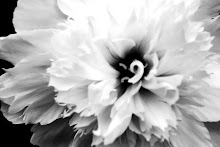“When I think something nice is going to happen
I seem to fly right up on the wings of anticipation;
and then the first thing I realize
I drop down to earth with
a thud.
…the flying part is glorious as long as it lasts...
it's like soaring through a sunset.
I think it almost pays for the thud.”
~L.M. Montgomery, Anne of Avonlea
.jpg) |
| Moose Tracks (c) 2010; Melissa Johnson. |
I once saw a documentary on the mating rituals of Moose. Fascinating and a bit disappointing, really, for reasons you'll soon understand.
There’s such hullabaloo in the
ritual. Come autumn, as if on cue, the bull
moose begins to shed the soft velvet on his antlers. “Shed first, mate first” might well be their
motto, and the mature males usually go first, kicking off the rutting season by
thrashing antlers about in the brush.
This alerts nearby cow moose (hey, ladies!) and other bulls that the
game is on, confirming their prime status and challenging nearby bulls to a little
stiff (ahem!) competition.
The bull then digs a hole (a few
inches deep and a couple of feet wide)—his rutting pit of love—into which he
urinates and then splashes around to cover his head and antlers and whatever
else he can soak in his smell.
Strangely, this robust smell triggers ovulation in a nearby cow, which
sends her into heat.
Other bulls close-by respond to her smell and his call, fighting and knocking antlers and pushing each other
around as they pound their moose chests, challenging each other for the chance
to breed with the cow. The cows are just
sort of hanging out waiting to be chosen before their “time” runs out. This process takes days (and about 25 minutes
of a 30 minute documentary) to sort itself out. Then, finally, the superior
bull makes his move . . .
It’s fairly anti-climaxic after
that (pun intended), for the actual sex act between them takes just seconds to
consummate. Prime bulls may mate up to
six times in the one-month season and, if my memory serves me correctly, I
think the statistic was something like a whopping 90% of cows get pregnant on
the first go in healthy moose populations!
Shortly thereafter, the bulls lose interest in the cows and the mamas basically
raise their babies alone. The end. And just like that, the documentary was over.
I couldn’t help but laugh at the
obvious comparison. Okay, so moose
mating rituals and the human experience are entirely different things, but in a
similar way do we not build-up—even dramatize—the major events and relationships
in our lives, planning each detail in our fascinating minds, plotting each move;
soaring high with anticipation about how wonderful and great it’s all going to
be when “it” goes down? Only later to
discover that the actual event was nowhere near as exciting as the road we took
to arrive there.
Apparently this sort of event
anticipation is quite common among us two-leggeds. Take vacations, for example. A study conducted by researchers in the
Netherlands (reported in the journal Applied
Research in Quality of Life) found that the simple act of planning a vacation boosted individuals’
happiness quotient for eight weeks compared to the more baseline levels of
happiness (or stress) that the same folks reported upon returning from the
vacation. (To read more, check out the
NY Times article “How Vacations Affect Your Happiness”, published February 18,
2010, www.NYTimes.com.)
Among other things, this study
illustrates in simple terms the impact of excitement and anticipation on our happiness
and overall sense of wellbeing. Whether
we’re planning a vacation, plotting a career change, making preparations for a
wedding, dreaming of climbing that mountain or whatever other thing we can
conjure in our minds, we’re wise to slow down and savor the delicious
anticipation and excitement along the way.
Indeed, it’s not just about the outcome but the journey itself. Make it great!







.jpg)



